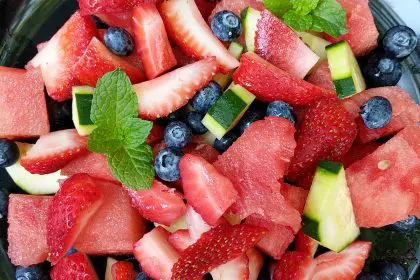That innocent-looking white crystal sprinkled across your dinner plate packs a dangerous punch most people never see coming. While your taste buds celebrate salt’s flavor-enhancing magic, your blood vessels, heart, kidneys, and bones absorb the damage of excessive sodium intake meal after meal, year after year. The consequences often remain invisible until serious problems emerge. Understanding salt’s hidden dangers and discovering natural alternatives could literally add years to your life.
How salt quietly damages your body
Salt doesn’t announce its harmful effects with immediate symptoms. Instead, it gradually alters your physiology in ways that accumulate over decades. This stealth factor makes excessive sodium particularly dangerous.
High blood pressure tops the list of salt-related health concerns. When you consume too much sodium, your body retains extra water to dilute it. This increased fluid volume raises pressure within your blood vessels, forcing your heart to work harder with every beat. Over time, this added strain damages arterial walls and overworks your heart muscle.
The kidney damage connection surprises many people. Your kidneys filter excess sodium, but consistently high sodium levels overwork these vital organs. As filtering capacity diminishes, a vicious cycle begins. Reduced kidney function leads to more sodium retention, further increasing blood pressure and causing additional kidney damage.
Beyond cardiovascular effects, excess salt leaches calcium from your bones. When your body eliminates sodium through urine, it often takes calcium along with it. This calcium loss weakens bone structure over time, potentially contributing to osteoporosis and fracture risk, especially in women.
The brain doesn’t escape salt’s reach either. Research links high sodium intake to increased stroke risk, cognitive decline, and even conditions like dementia. The mechanisms involve both blood vessel damage and direct effects on brain tissue that scientists are still working to fully understand.
Perhaps most concerning, your taste buds adapt to high salt intake, requiring increasingly more sodium to achieve the same flavor satisfaction. This tolerance creates a dangerous spiral where normal foods taste bland, driving even higher salt consumption unless the cycle is deliberately broken.
The shocking places salt hides in your diet
Most people assume their salt shaker represents their primary sodium source. In reality, processed and restaurant foods contribute roughly 70% of the average person’s sodium intake, often in forms you’d never suspect.
Bread and baked goods contain surprising amounts of sodium. A single slice of commercial bread can contain 100-200mg of sodium. Since most people eat multiple servings daily, this seemingly innocent food becomes a major sodium contributor.
Canned soups lead the sodium offender list, with a typical can containing more than 2,000mg, nearly an entire day’s recommended intake. Their liquid nature masks this sodium content, making them seem less salty than they actually are.
Cheese and dairy products hide substantial sodium amounts. A single ounce of processed cheese can pack 400mg, while cottage cheese contains even more. These dairy sources add up quickly when consumed regularly.
Breakfast cereals, even some marketed as healthy options, often contain significant sodium. Combined with the milk added, your supposedly nutritious breakfast might deliver a substantial sodium dose before your day even begins.
Restaurant meals contain notoriously high sodium levels, often exceeding 3,000mg in a single entrée. Restaurant chefs rely on salt for flavor, especially in chain establishments where consistency takes priority over health considerations.
Condiments and sauces concentrate sodium in small servings. Just one tablespoon of soy sauce contains about 900mg of sodium, while a tablespoon of ketchup adds another 160mg. These flavor enhancers significantly increase your meal’s sodium content.
Even sweet foods like cookies and cakes contain substantial sodium from baking soda, baking powder, and other ingredients. This unexpected sodium source catches many people by surprise when they review nutrition labels.
The flavor-boosting alternatives that actually work
Reducing sodium doesn’t mean sacrificing flavor. Natural alternatives can enhance your food’s taste profile while supporting better health. These substitutes work by activating different taste receptors and adding complexity rather than just saltiness.
Herbs and spices represent your first line of flavor defense when reducing salt. Fresh herbs like basil, cilantro, and mint add brightness, while dried herbs like oregano, thyme, and rosemary contribute depth and complexity. Spices ranging from mild paprika to pungent garlic powder create dimension without sodium.
Citrus juices and zests add acid brightness that enhances flavor perception. A squeeze of lemon or lime at serving time wakes up nearly any dish, while orange and grapefruit work beautifully with specific flavor profiles. The aromatic oils in citrus zest provide concentrated flavor without additional moisture.
Vinegars offer concentrated flavor with minimal calories and no sodium. Balsamic, red wine, apple cider, and rice vinegars each bring unique characteristics to different cuisines. A few drops at the end of cooking or in salad dressings satisfies the palate’s desire for intensity.
Aromatics like onions, garlic, shallots, and leeks provide foundational flavor when cooked properly. Taking time to slowly caramelize these ingredients releases their natural sweetness and creates rich, complex flavors that reduce the need for salt.
Umami-rich ingredients provide the savory satisfaction often associated with salt. Mushrooms, tomatoes, nutritional yeast, and small amounts of Parmesan cheese contribute this fifth taste without excessive sodium. Roasting or caramelizing these ingredients intensifies their umami properties.
Hot peppers stimulate pain receptors that distract from reduced saltiness. Capsaicin, the compound that creates heat, adds intensity that satisfies the desire for flavor impact. Even mild chile varieties contribute complexity without overwhelming heat.
Wine and other cooking alcohols release flavor compounds in food that would otherwise remain locked away. The alcohol evaporates during cooking, leaving behind enhanced taste without adding sodium. Even a small splash deglazes pans and builds flavor depth.
The gradual reduction approach that actually works
Attempting to drastically cut salt overnight typically fails as taste buds rebel against the sudden change. A gradual approach proves more sustainable and ultimately more successful for long-term sodium reduction.
Starting with a 25% reduction in added salt provides the first step. This modest decrease typically falls below the threshold where most people detect flavor differences. After 2-3 weeks at this level, your taste perception adjusts, making further reductions possible.
Reading nutrition labels becomes essential for processed food choices. Comparing sodium content between similar products often reveals surprising differences. Choosing lower-sodium versions while maintaining your usual eating patterns creates effortless sodium reduction.
The half-salt strategy works well for home cooking. Either use half the salt called for in recipes or use commercial half-salt products that replace some sodium with potassium chloride. This approach maintains some familiar saltiness while reducing sodium intake.
Strategic timing maximizes salt perception. Adding a small amount of salt at the food’s surface just before serving provides immediate taste bud contact. This technique creates saltiness impression beyond what the same amount mixed into the dish would provide.
Emphasizing fresh, whole foods naturally reduces sodium intake without requiring willpower. Unprocessed meats, fresh vegetables, fruits, and whole grains contain minimal natural sodium. Centering your diet around these foods automatically solves much of the sodium problem.
Salt-free flavor layering techniques can transform cooking results. Starting with aromatics, adding herbs during cooking, and finishing with acid and fresh herbs creates complex flavor that satisfies without excessive salt. This technique, used by skilled chefs, takes advantage of how different flavors develop during cooking.
The label-reading secrets few people know
Navigating nutrition labels requires understanding sodium’s many disguises and the often misleading marketing claims surrounding it.
The “sodium per serving” number provides your critical reference point, but serving sizes often underestimate typical consumption. A “low sodium” soup might contain 140mg per serving, but the small print might reveal that the can contains 2.5 servings, bringing the actual sodium content for the whole can to 350mg.
Claims like “reduced sodium” only mean the product contains 25% less sodium than the regular version, which might still be extremely high. A “reduced sodium” soy sauce, for instance, might still contain 600mg per tablespoon compared to the regular 900mg.
Sodium appears under multiple names in ingredient lists. Watch for sodium benzoate, disodium phosphate, monosodium glutamate, sodium nitrite, and sodium citrate. These compounds all contribute to your total sodium intake despite not being called “salt.”
The order of ingredients reveals important information. If salt appears among the first few ingredients, the product contains significant sodium regardless of marketing claims. This position indicates salt as one of the predominant ingredients by weight.
Restaurant nutrition information, when available, often reveals shocking sodium levels. Many chain restaurant entrées contain 2,000-4,000mg of sodium, more than an entire day’s recommended intake. Even seemingly healthy options like salads often contain 1,000mg or more when dressing is included.
Understanding these label-reading strategies helps you make informed choices that gradually reduce your sodium intake while maintaining satisfaction and convenience. Combined with flavorful cooking alternatives and gradual taste adaptation, these approaches can transform your relationship with salt and potentially add years of healthy living to your life.














